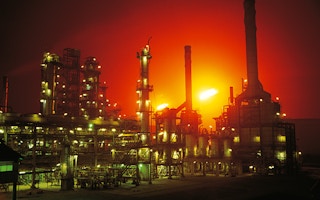With the Rudd government announcing a faster conversion to a market-driven carbon price, it should be time to review the assistance provided to emissions-intensive, trade-exposed industries such as raw steel production and aluminium smelting.
The original arguments used for assistance have now all been nullified – yet despite today’s announcements of significant cuts elsewhere, the assistance will continue.
The Rudd government estimates the budget impact of the change to an ETS to be $3.8 billion in lost income and have outlined measures they say will save $3.9 billion in order to pay for it.
Among the measures to ensure revenue neutrality include saving $1.8 billion from changes to the car fringe benefits tax and cutting public service jobs.
More savings occur from returning unallocated funds under the Biodiversity Fund, Carbon Farming Futures and Clean Technology programs. The issue of why these funds were never allocated has not been broached.
The government is also, wisely, cutting funding for the Energy Security Fund and the Coal Sector Jobs Package. These programs support emissions-intensive electricity generators and the high-emitting coal mines to transition to a lower-emissions profile and originally included a buy-out scheme for the dirtiest coal-fired power stations.
While reducing funding in this area is a positive move, it highlights that the carbon price, even as it currently stands, has had little impact on the viability of the worst emitters. Certainly, at the new $6 per tonne, little transition assistance is needed.
Through all this, the emissions-intensive trade-exposed industries have been left untouched. Converting to a floating carbon price will see the price decrease to the international level, which is currently around $6 per tonne. This means their industry assistance will remain, yet their carbon liability will fall by 75%.
A far simpler way to cover the budget would be to make these polluters pay for the external cost of all their emissions even if, and especially since, this is only $6 per tonne.
Logically, a review of the assistance is needed this year. These industries were given unprecedented and largely unjustifiable concessions in the Gillard government’s Clean Energy Future policy. Concessions were provided in the form of free permits. For example, high emissions-intensive industries such as raw steel, cement clinker, and aluminium smelting received 94.5% of their carbon permits for free. Medium emissions-intensive industries such as alumina and oil refining, liquefied natural gas and coal mining received up to 66% of their permits for free.
The argument for the concessions at the time revolved around the impact of the carbon price on the competitiveness of Australian companies in international markets. It was argued that since companies in China and other countries were not paying a carbon price, this disadvantaged Australian companies and effectively sent production and therefore jobs overseas.
Moreover, trade-exposed industries were said to be already struggling under the high Australian dollar and high commodity prices, reducing the competitiveness of Australian producers and increasing their input prices respectively. The global financial crisis was also used to argue for higher levels of assistance than originally proposed under the first Rudd government’s Carbon Pollution Reduction Scheme.
All these arguments have now been largely nullified. The exchange rate is now around 15% below the levels experienced when the policy was being negotiated in 2011. Commodity prices are now much lower and had reached their peak at that time. China has also commenced the first of seven pilot emissions-trading schemes; it plans to implement a full national scheme by 2015.
More importantly, the cost effect of the carbon price itself will now be much lower, although the Grattan Institute, even when they assumed a price of $35 per tonne, found little reason for the assistance provided to begin with.
Under the original Clean Energy Future policy, the assistance provided to industry was to be reviewed in 2014-15 with the reviewers considering whether an alternative assistance pattern would meet program objectives more effectively. The intended review was obviously timed to coincide with and prepare for the conversion to a floating price in July 2015.
Now, with the conversion occurring in July 2014, industry assistance should also be reviewed earlier. This is allowed under the policy.
Of course, the industry assistance was, in the words of the Government, “guaranteed” for five years with three years notice required for any changes.
However, the Australian public were also promised a fixed price until 2015, a price floor of $15 for three years thereafter, $946 million allocated to the Biodiversity Fund and $1.2 billion allocated to the Clean Technology Program.
These important provisions have been changed or scrapped and the industry assistance could also be changed given the political will.
This post originally appeared here. Neil Perry is a research lecturer in corporate social responsibility and sustainability at University of Western Sydney

















